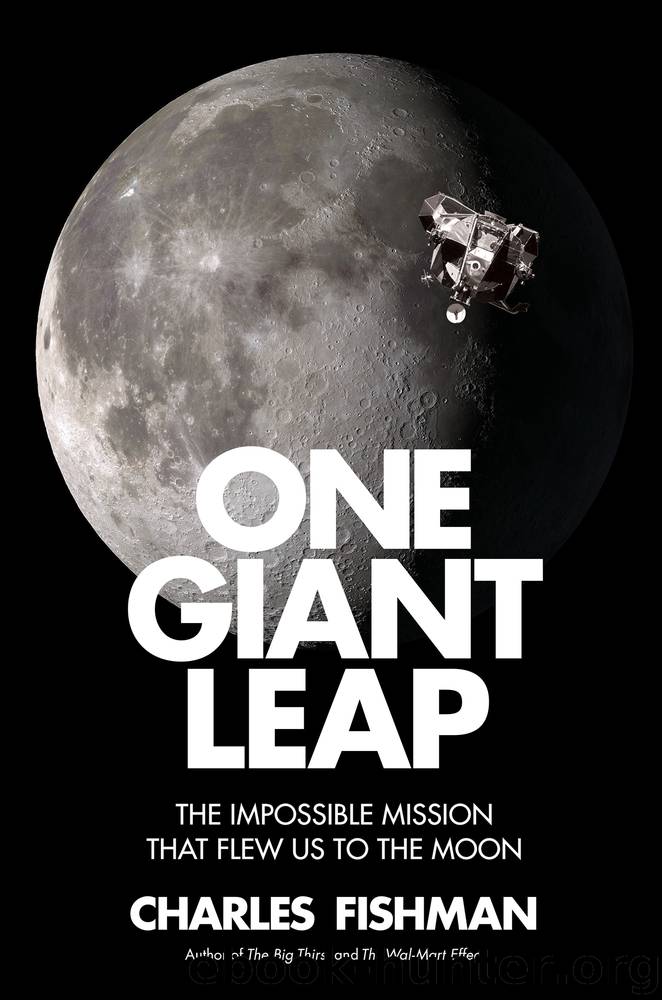One Giant Leap : The Impossible Mission That Flew Us to the Moon (9781501106316) by Fishman Charles

Author:Fishman, Charles
Language: eng
Format: epub
Publisher: Simon & Schuster
Published: 2019-06-10T16:00:00+00:00
* * *
Among the first people to start thinking about how to rendezvous in space was a group at NASA’s Langley Research Center in Hampton, Virginia. Langley is where NASA’s predecessor, NACA, had been headquartered, and before NASA created the Manned Spacecraft Center in Houston, Langley was where the early manned spaceflights were developed and managed.
Langley was also an aeronautics research center, but it had been mostly focused on aircraft rather than spacecraft before it became part of NASA. In the weeks after Sputnik, one Langley scientist went looking for books on orbital mechanics—on how to fly in space—and in the Langley technical library he found exactly one: Forest R. Moulton’s classic, An Introduction to Celestial Mechanics. In 1958 Langley was in possession of the most recent version of Moulton: the 1914 update of the 1902 edition. The newest text Langley had about movement through space dated to before World War I.8
But it was clear at Langley and elsewhere that any serious effort in space would require figuring out rendezvous. If you wanted a space station, you’d have to be able to send spacecraft up to dock with it. If you wanted to service or retrieve satellites, you’d have to be able to chase them down and capture them in space. If you wanted to be able to launch pieces of a bigger project—a spaceship or a space station—and assemble them in space, you’d have to be able to rendezvous.
By the summer of 1959 Langley had formed two different committees to study how to do rendezvous, and both were chaired by a man named John C. Houbolt, a scientist, engineer, and analyst regarded at Langley as brilliant. Houbolt was chosen to, among other things, teach the Mercury astronauts about space navigation.9
Houbolt became fascinated by rendezvous, by the mechanics of it, the math, by things like the timing rendezvous required: when did you have to launch your spacecraft from Earth to be able to rendezvous with a particular spacecraft already in orbit? Although he had colleagues at Langley also working on rendezvous, Houbolt became known as “the rendezvous man.”10
In particular, it looked like rendezvous could really help with the logistics of a flight to the Moon. By stunning coincidence, on the very same day in January 1960, one of Houbolt’s colleagues at Langley and a group of visiting engineers and scientists from the aeronautics firm Chance Vought presented variations on the same idea of how to use rendezvous to make a Moon trip, suddenly, more practical.
One of the hard things about flying to the Moon is balancing weight and fuel. If you fly a single rocket from the Earth to the Moon and back, it has to be awfully big, because it has to launch from Earth, have enough fuel to get to the Moon, then it has to land on the Moon, have enough fuel to launch itself back off the Moon, and enough fuel to fly back home, where it has to have the heavy heat shield necessary to protect it on reentry.
Download
This site does not store any files on its server. We only index and link to content provided by other sites. Please contact the content providers to delete copyright contents if any and email us, we'll remove relevant links or contents immediately.
| Aerodynamics | Aircraft Design & Construction |
| Astronautics & Space Flight | Avionics |
| Gas Dynamics | Propulsion Technology |
Whiskies Galore by Ian Buxton(41941)
Introduction to Aircraft Design (Cambridge Aerospace Series) by John P. Fielding(33095)
Small Unmanned Fixed-wing Aircraft Design by Andrew J. Keane Andras Sobester James P. Scanlan & András Sóbester & James P. Scanlan(32767)
Craft Beer for the Homebrewer by Michael Agnew(18200)
Turbulence by E. J. Noyes(7983)
The Complete Stick Figure Physics Tutorials by Allen Sarah(7339)
Kaplan MCAT General Chemistry Review by Kaplan(6903)
The Thirst by Nesbo Jo(6882)
Bad Blood by John Carreyrou(6584)
Modelling of Convective Heat and Mass Transfer in Rotating Flows by Igor V. Shevchuk(6408)
Learning SQL by Alan Beaulieu(6239)
Weapons of Math Destruction by Cathy O'Neil(6220)
Man-made Catastrophes and Risk Information Concealment by Dmitry Chernov & Didier Sornette(5958)
Digital Minimalism by Cal Newport;(5707)
Life 3.0: Being Human in the Age of Artificial Intelligence by Tegmark Max(5519)
iGen by Jean M. Twenge(5387)
Secrets of Antigravity Propulsion: Tesla, UFOs, and Classified Aerospace Technology by Ph.D. Paul A. Laviolette(5336)
Design of Trajectory Optimization Approach for Space Maneuver Vehicle Skip Entry Problems by Runqi Chai & Al Savvaris & Antonios Tsourdos & Senchun Chai(5040)
Pale Blue Dot by Carl Sagan(4960)
